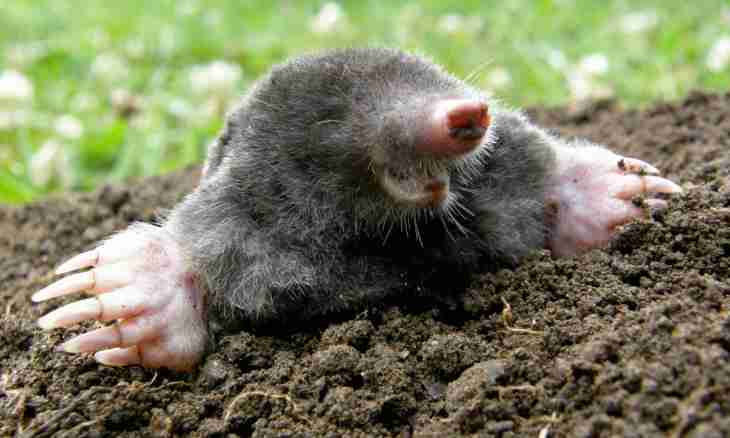Mole, perhaps, the most known animal who digs holes in places of the dwelling. These little and almost blind sloggers are capable to do to one hundred holes and to kilometer of tunnels a day.
Moles can be met everywhere from Europe to Siberia. The main places of their dwelling are edges of the woods, fields, kitchen gardens and gardens. Those places, where soil rather soft and pliable. They avoid only sandy soils and proximity of ground waters though small open reservoirs overcome without special work, crossing them. But it is not simple to see moles nevertheless, they practically do not get out to a surface. Of course, the appeared holes and small barrows with the earth which is accurately put at the edges will become sign that on your site the mole lodged.
The mole - one of the most gluttonous mammals, in day he can eat more body weight. The reason of such appetite in the accelerated metabolism.
Underground kingdom
The mole, as we know, lives in the earth for penetration into which thickness he spirally digs holes, being rolled in the earth and otgreby by her paws. Pads perfectly are for this purpose adapted, they have huge (in a third of a paw) claws and powerful muscles.
The sight at these small animals is almost absent because they carry out all the life in underpasses, extremely seldom getting out to a surface where they become clumsy and helpless. Another matter in the earth where they lay the numerous courses which have the system and appointment. These courses are divided into inhabited and fodder: on inhabited moles go from a nest to fodder compartments or to the place of a watering place. Fodder sites serve as traps for worms which moles eat. But the main building is the nest which is located at a depth up to two meters in the protected place, under stones, constructions or roots of trees. The nest is in a sense cozy: the mole spreads it leaves and a dry grass, brings feathers and mosses. Thus, all courses form themselves the harmonious system of galleries with the courses with a diameter of 5 centimeters, with the fodder compartments which are located very close to the earth. Those openings that are visible to a human eye, actually serve in the earth only to throw out surplus of the earth.
Year-round diligenceThe activity of moles remains for all year, in the winter they can lay the courses even under snow or are deeper where the soil does not freeze through.
The constant movement and aeration of the earth - a condition of survival of a mole who breathes usual air for the same reason moles do not lodge on clay soils.
Adult moles are usually tied to the sites, they do not change them throughout all life and usually always return to them, even from very long distance. Young moles leave from parental nests on distance to two kilometers and there begin independent life. In couples moles do not live, they unite only for the period of mating dance after the female becomes pregnant, the male leaves her nest.

